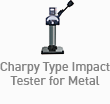| [INFORMATION] What is a yield point? | |
|---|---|
| Writer : 관리자(salt@light-salt.kr) Date : 23.10.18 Hit : 138 | |
| Tags : #universaltestingmachine,#UTM,#stingmachine,#tensilecotensilestrength,#hydraulicuniversaltestingmachine,#hydraulictensiletestingmachine,#tenstilestrengthtempressiontestmachine,#materialtestingmachine,#Salt,#yeildpoint,#upperyieldpoint,#loweryieldpoint,#0.2offset | |
| Attachments : | |
|
The yield point (Re) or yield strength is one of the values of physical properties found through tensile tests for materials such as metals (e.g., ISO 6892), plastics, composites (e.g., ISO 527). The yield point means the end of the elastic behavior and the beginning of the plastic behavior in the material. Exceeding the yield point means that the material cannot return to its original form.
Parts and structures can no longer be safely
used if the yield point is locally or partially exceeded.
The upper yield point (ReH) refers to the
stress at which no permanent plastic deformation of the material occurs when
the load is released. If the load is released by ending the test
before the upper yield point, the tensioned material can be returned to its
original form.
If the material is tensioned above the
upper yield point, the material cannot return to its original form even after
the load has been released.
The upper yield point represents the peak value when the initial tensile graph takes a peak load and begins to drop significantly. Plastic deformation begins to occur after the upper yield point. When the yield point is clear, the material begins to flow and the stress
decreases slightly, but the elongation increases. The aforementioned situations
are only in steel with little/no alloy. The upper yield point is defined in ISO
6892-1 as follows.
After the maximum stress has been reached,
there must be a stress reduction of at least 0.5%, and subsequent flow of at
least 0.05% with no tensile stress again exceeding the yield point.
The lower yield point (ReL) is the lowest
stress value in the flow interval after the upper yield point.
The upper yield point is called the yield
point if it does not span a wide range or is not identified and a yield occurs
at a constant load.
The offset yield point is used when the
yield point of the material cannot be reliably measured during the tensile
test. In this case, measure with the 0.2 offset
yield point of the plastic elongation. Offset yield is any point on the stress-strain curve and is mainly used for materials with no apparent yield strength. The elasticity and plastic range of the material are constantly diverted, making the yield strength unclear. Offset yield 0.2% is frequently used.
0.2 offset yield (Rp0.2) is the tensile
stress that the plastic elongation in the short tensile test is consistent with
the elongation meter measurement length ratio (0.2%). Cold rolled or cold molded materials have
no obvious yield point. These materials are determined and specified as offset
yield of 0.2%. The 0.2% offset yield is always clearly
visible in the stress-strain diagram (the upper yield point is not always the
case).
The yield ratio is calculated to find the
point at which material damage begins and shows how much tensile stress the
material used can withstand.
Salt
Co., LTD’s Basic Models with Yield point Function
*For other models or for
more information please contact.* Technology
and Art, Dignity, and Dynamics impress customers at last.
Contact
Salt-S@light-salt,kr
|
|
| Prev | What is an appropriate fixture for yarn tensile testing? |
| Next | Hydraulic Servo Type Universal Testing Machine - ST-1004(1,000kN) |
|
|






























































































































